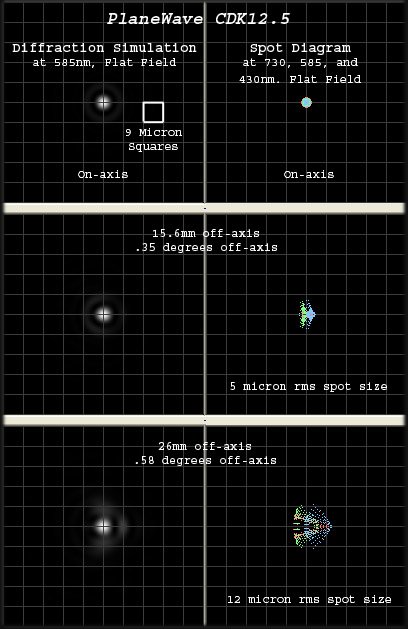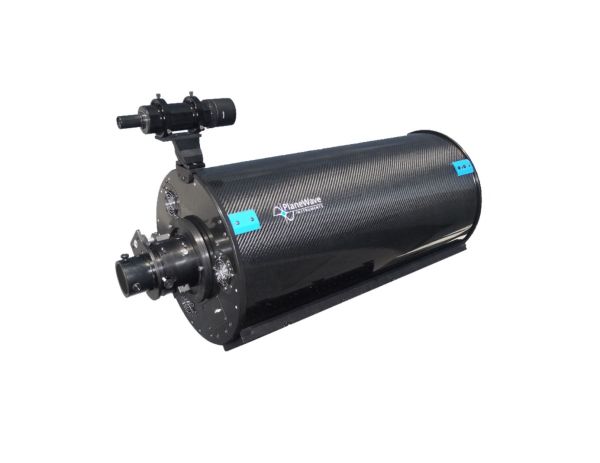PlaneWave Instruments CDK12.5 ASTROGRAPH F/8 with fused silica optics
PlaneWave Instruments CDK12.5 ASTROGRAPH F/8 with fused silica optics
After the successful introduction of the CDK 20" Astrograph from PlaneWave for few years ago, the CDK 12.5" is now available in a smaller and even more affordable aperture. The CDK 12.5" is an Astrograph in the price-range of many amateur-astronomers.
The abbreviation CDK stands for the optical system of the PlaneWave astrographs - a Dall Kirkham Cassegrain with a optical correction unit. The result is the CDK 12.5" which is free from off-axis coma and off-axis astigmatism, yielding a perfectly flat field all the way out to the edge of a 52mm image circle.
- CDK12.5 Astrograph, 12.5 inch with Fused Silica Optics
- modified to Dall-Kirkham, with fully corrected image field
- 3" Dovetail, focal length 2.541 mm (f/8)
- Delta T Ready, 3,5" Hedrick Focuser (without EFA Kit)
- Requires a crating #1323512. The crating will be charged extra
Fused Silica is a synthetic amorphous silica glass of the highest purity and one of the most transparent glasses made. The optical and thermal properties of fused silica are superior to other types of glass due to its purity. Its transmission and homogeneity exceed those of crystalline quartz without the problems of temperature instability inherent in the crystalline form. Fused Silica has a coefficient of thermal expansion six times lower than Borosilicate (Pyrex) glass, which means that as fused silica cools down, it preserves its shape to a high degree of accuracy. This translates into consistent optical performance and unchanging focus over temperature changes. With its high melting temperature ()~ 1.600 degree Celsius), a very low coefficient of thermal expansion and resistance to thermal shock, fused silica is the material of choice for professional observatories as well as various scientific applications.
Spot Diagram:
On the left column, the diagram shows a diffraction simulation for 12.5" CDK optics, and the right column shows the calculated spot diagram. The small squares in the diagram are 9 micrometer (0.009 mm) wide. On-axis is on top, the center line is 15.6 mm off-axis (0.35 degrees) and the bottom line is 26 mm off-axis (0.58 degrees).
The diameter of a star at the edge of the flat field corresponds to the pixel size of current large-format CCD chips and the imaging quality of the optics is limited only by the seeing conditions and the quality of the tracking.
If you are working with CCD cameras from SBIG (with or without AO8), accurate focus distances to the CCD chip (spacing of the primary mirror / chip surface) must be met to maintain the planarity of the field and get a good image. For this purpose, there are adapters for different configurations.

- Optical Design: Corrected Dall-Kirkham (CDK)
- Aperture (mm): 12,5" (318mm)
- Focal Length: 2.541 mm (100.04 inch)
- Focal Ratio: f/8
- Image Field: 52 mm
- Back Focus Distance: 10.45inch (265 mm) from Mounting Surface, 7,2 inch (183 mm) from Racked in Focuser
- Central Obstruction: 42% of the Primary Mirror
- Substrate: Fused Silica
- Optical length: 31 inch (787 mm)
- Optical Tube Weight: 46 lbs (21 kg)
| Product Status | New |
|---|---|
| Package width | 559 mm |
| Package height | 737 mm |
| Package depth | 1219 mm |
| No. of parcels | 1 |





